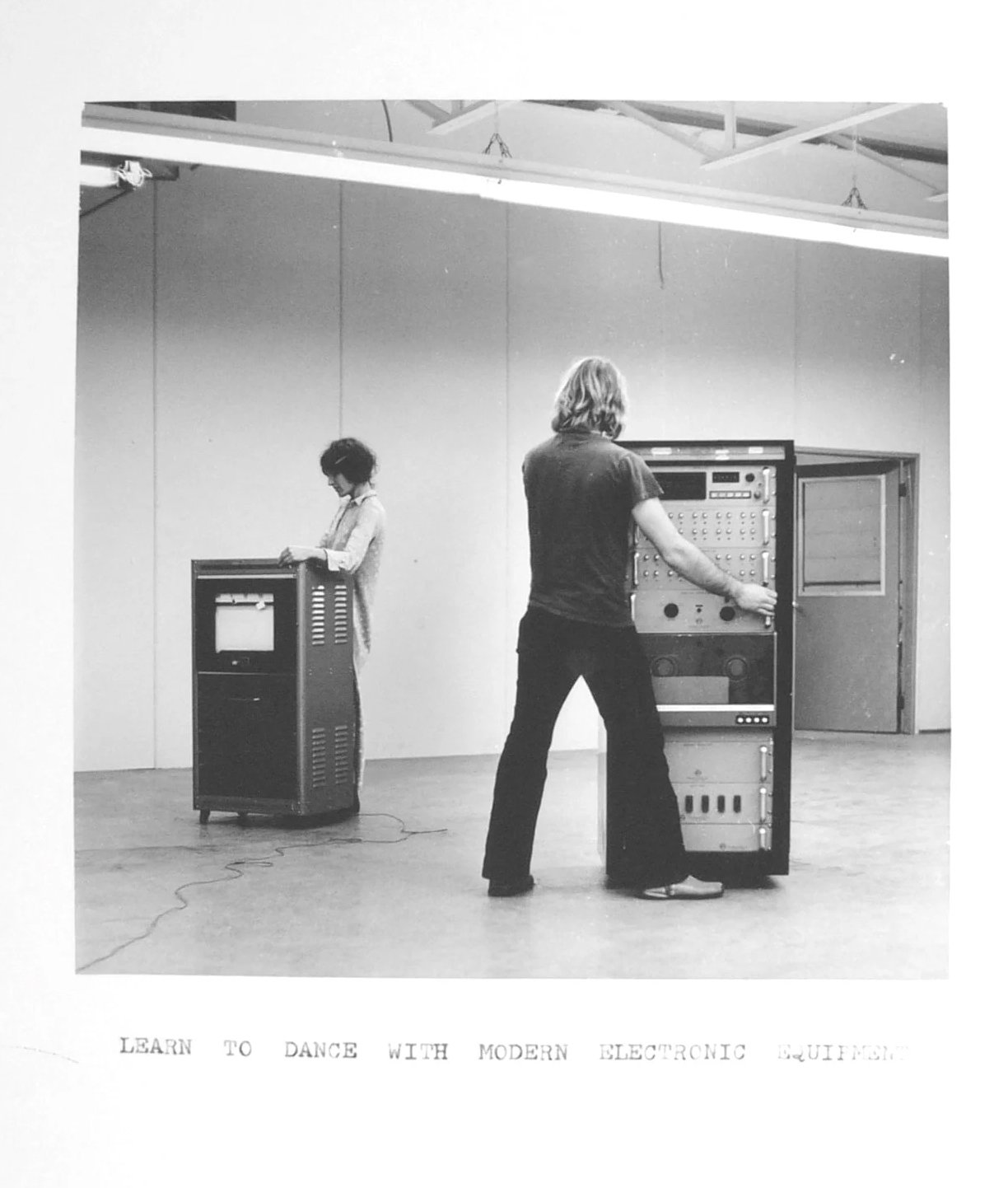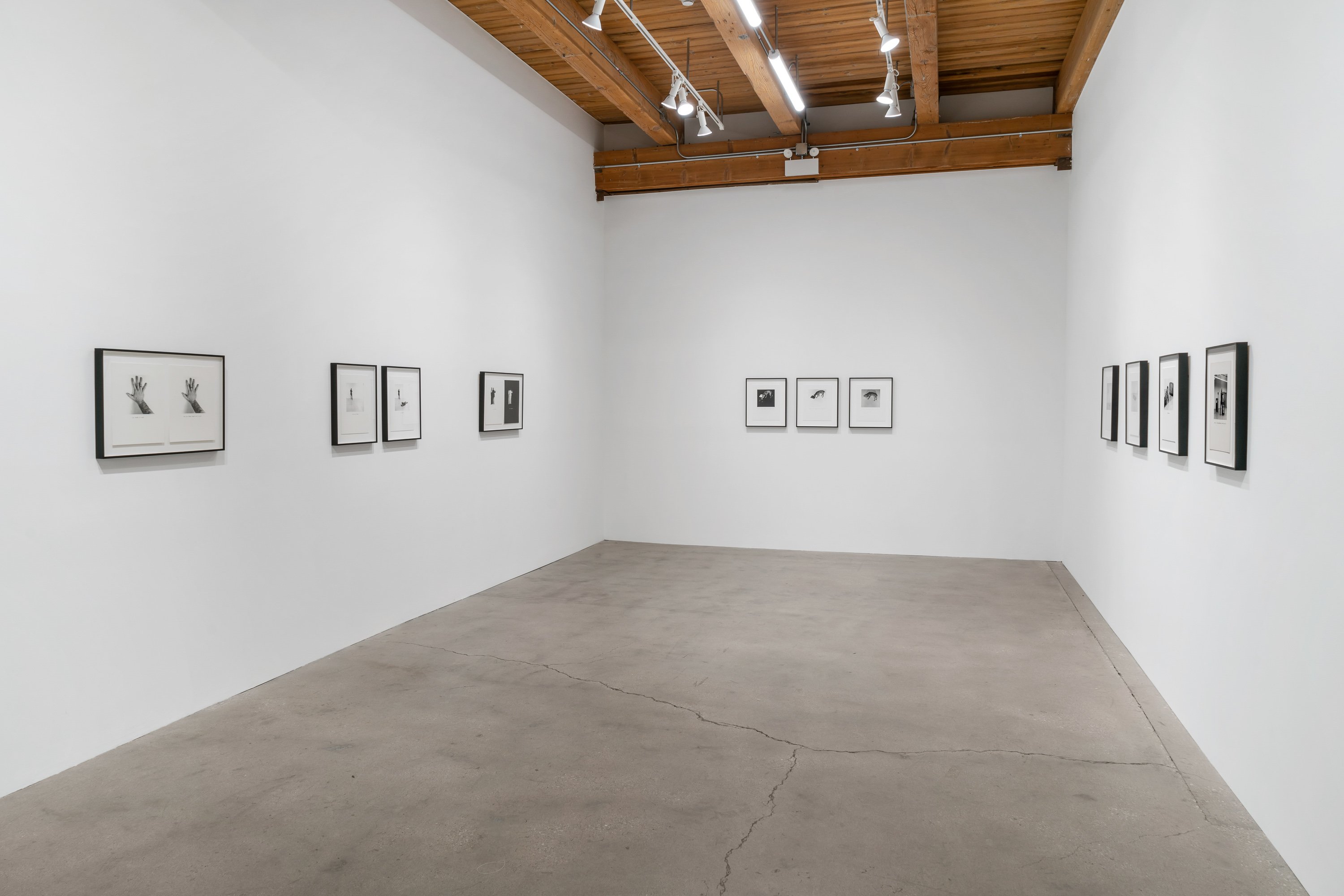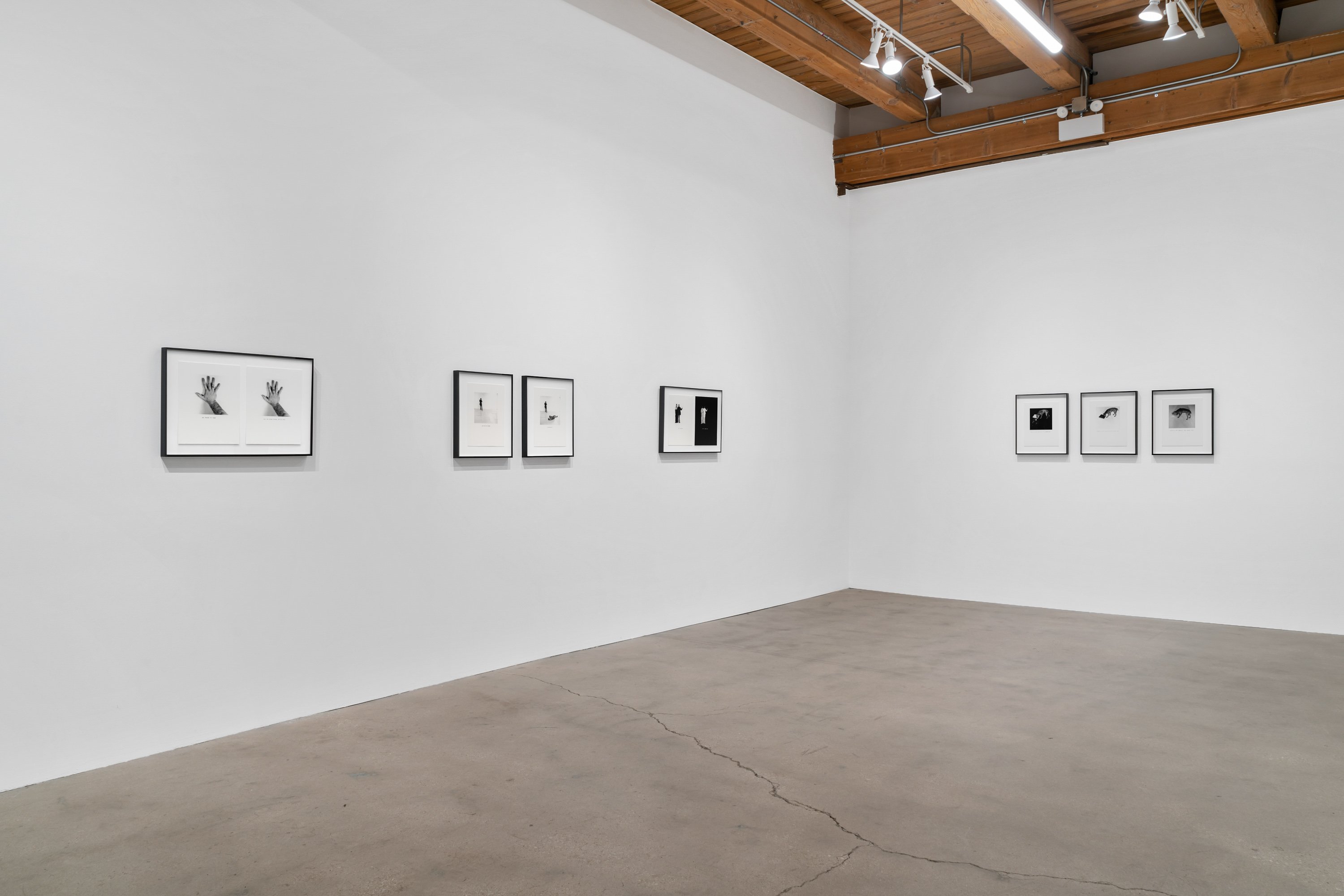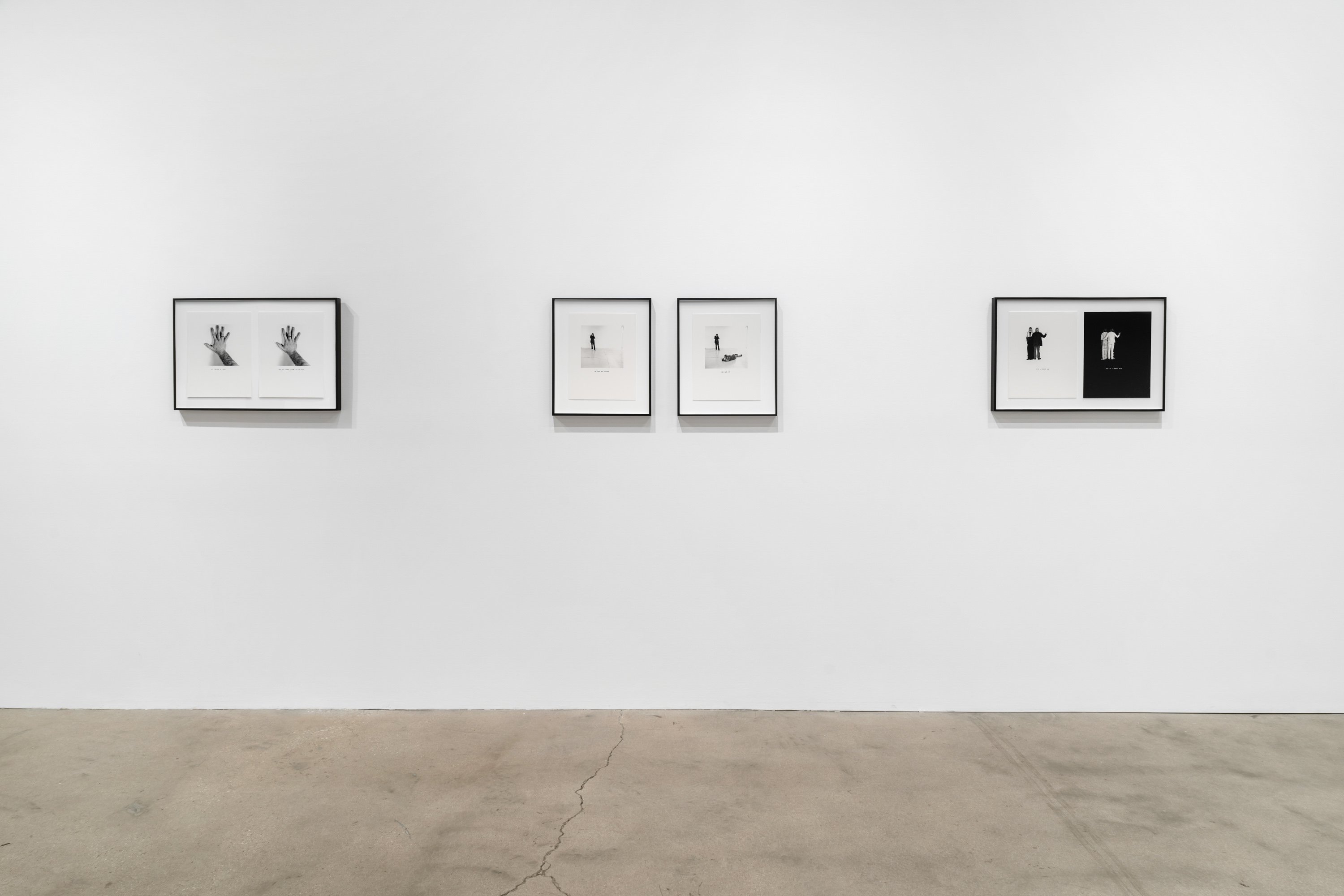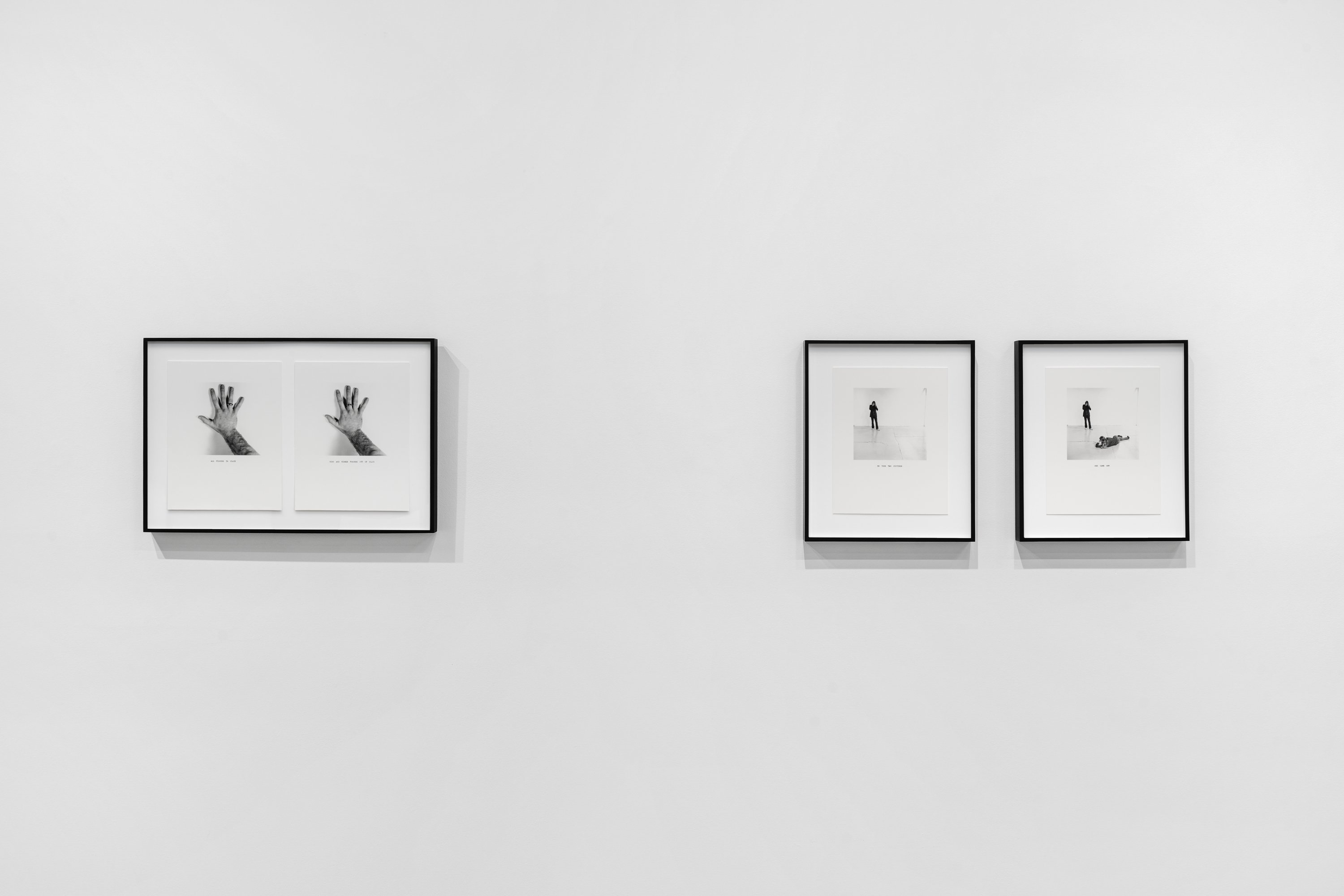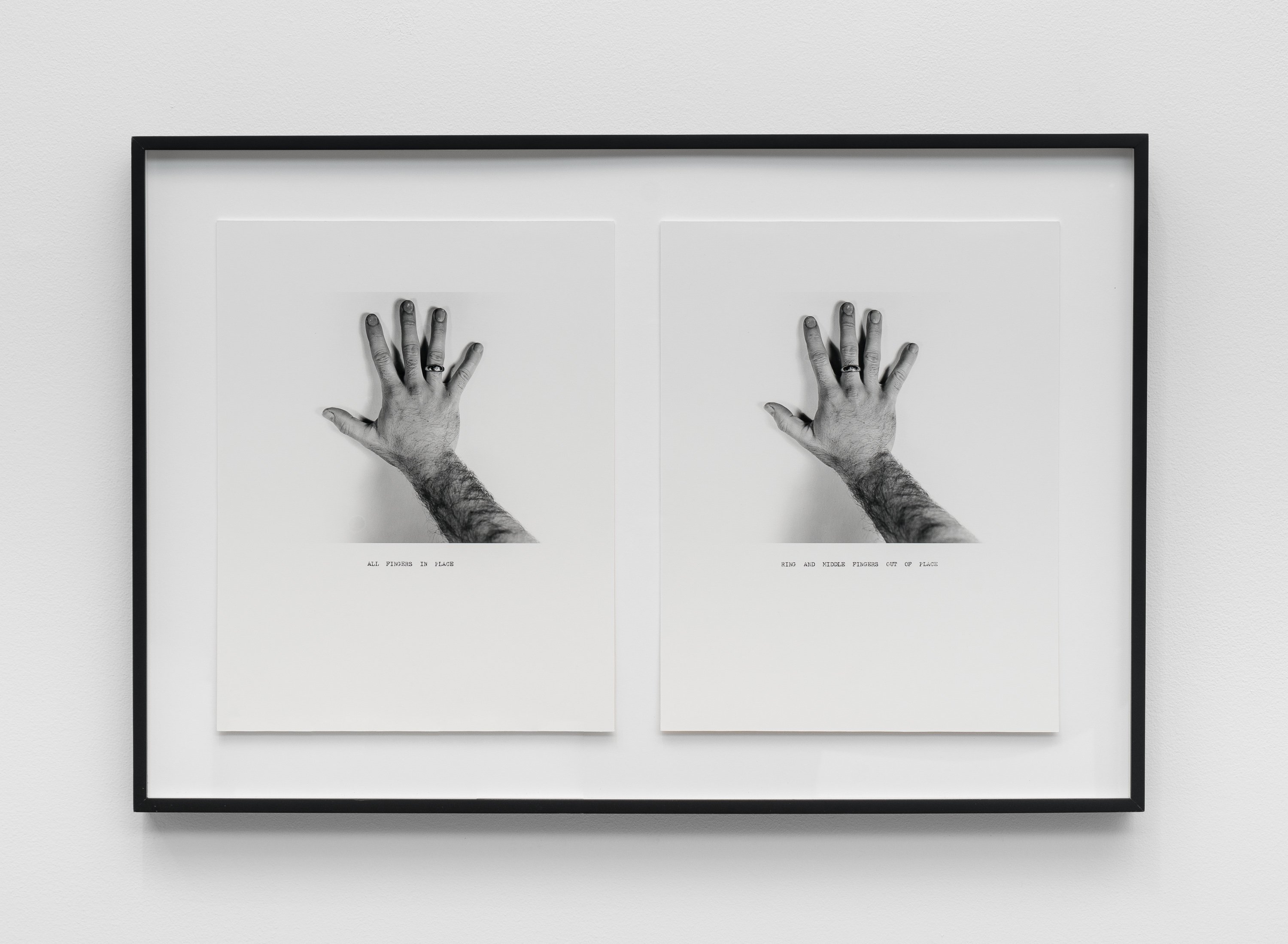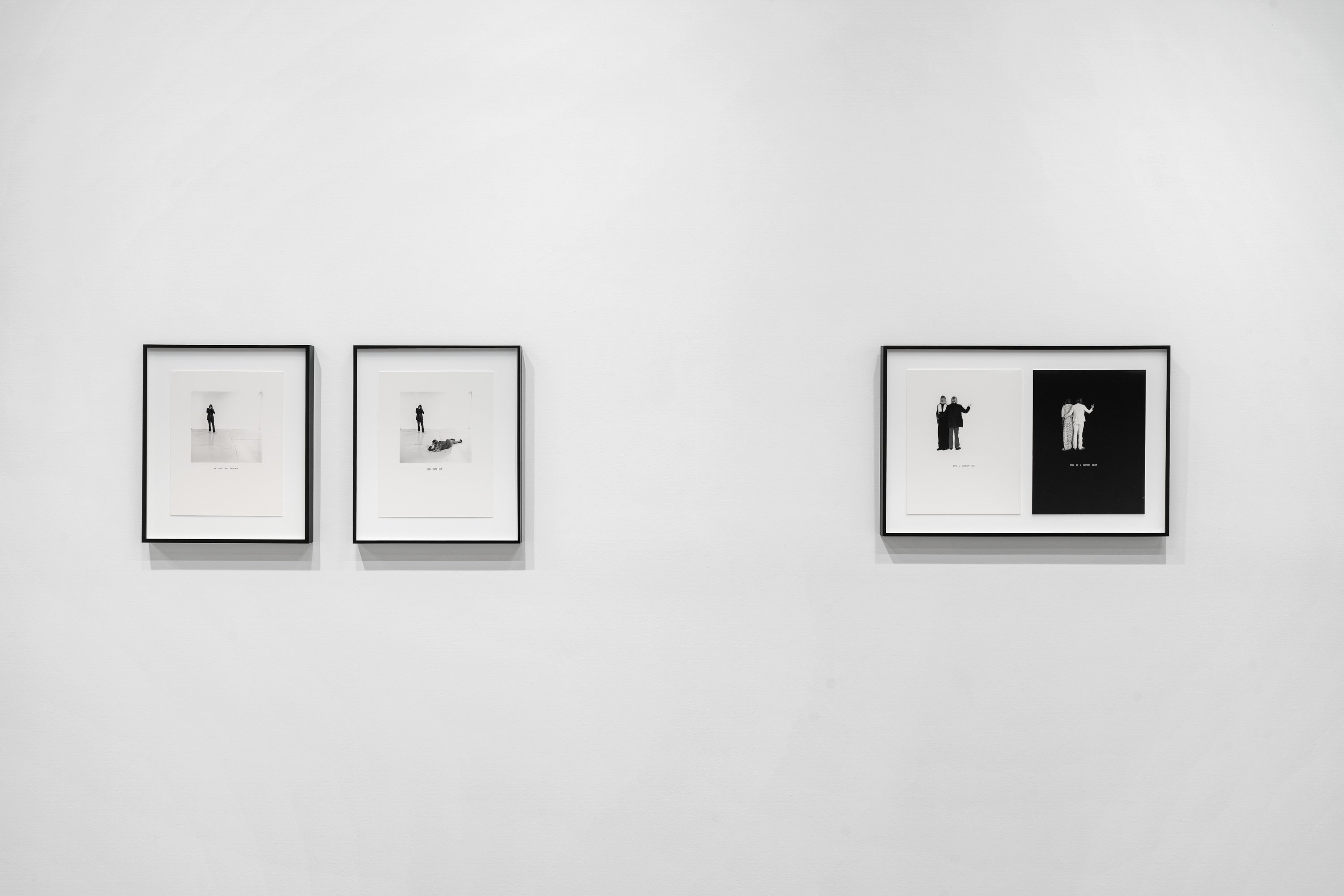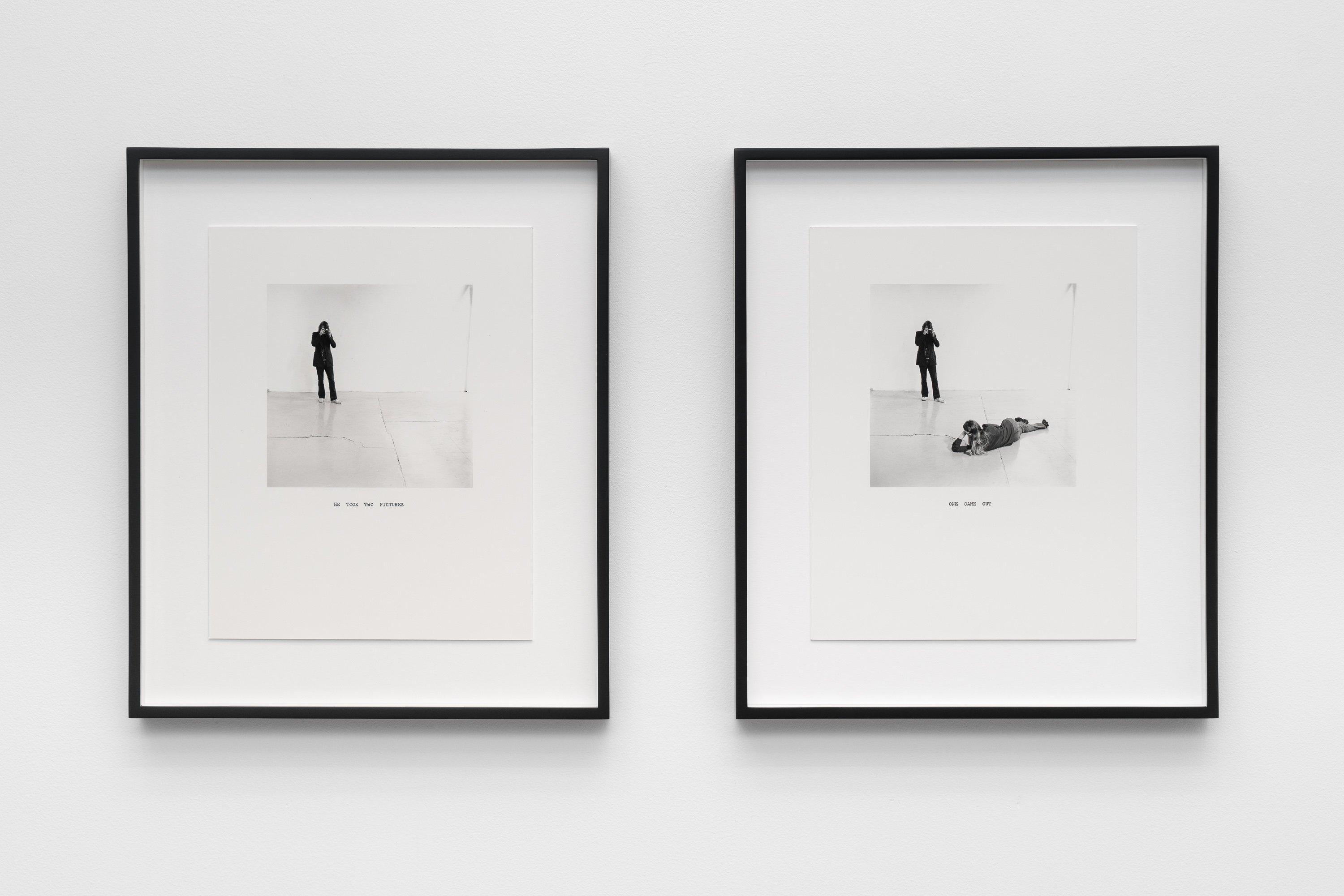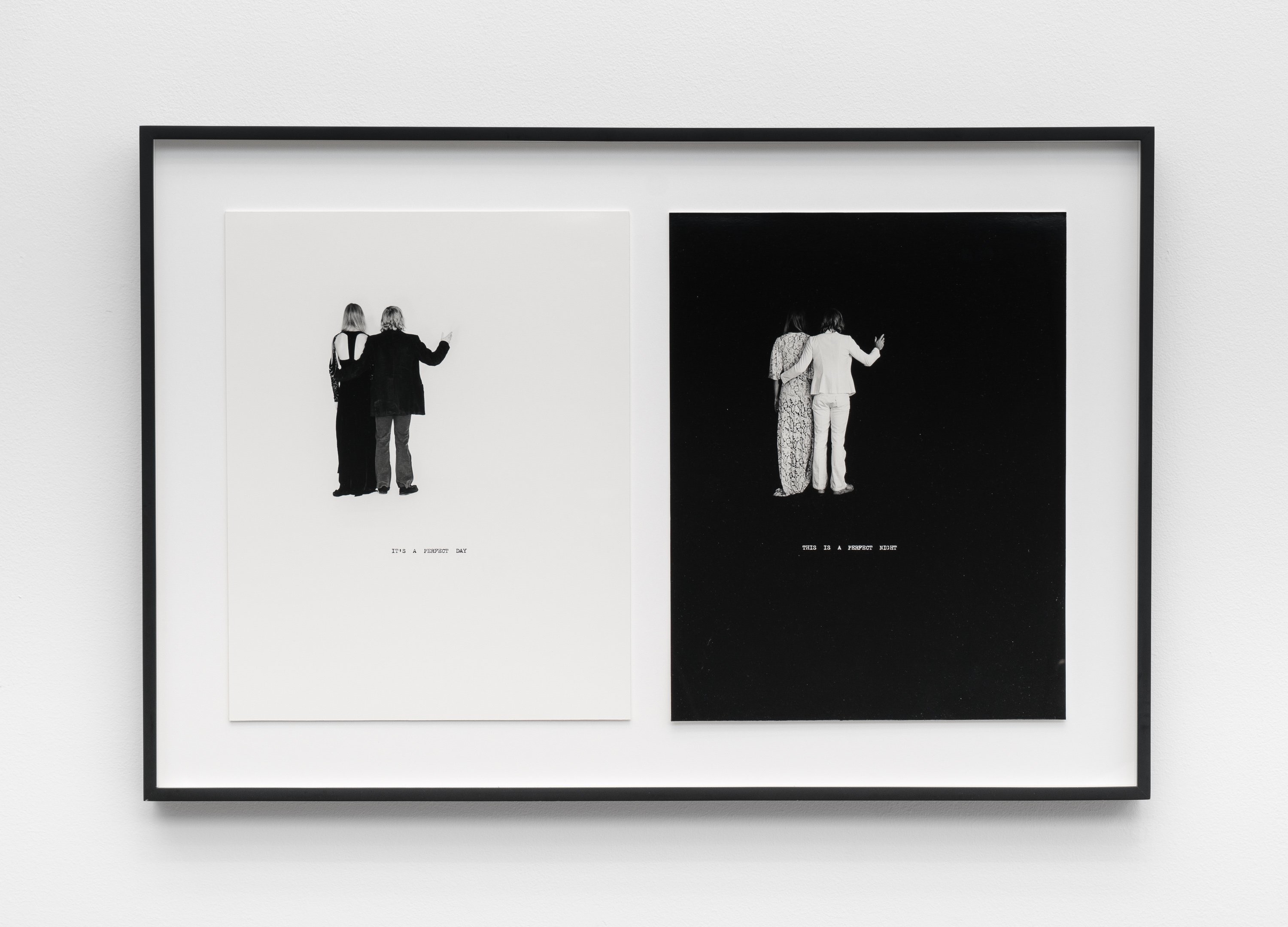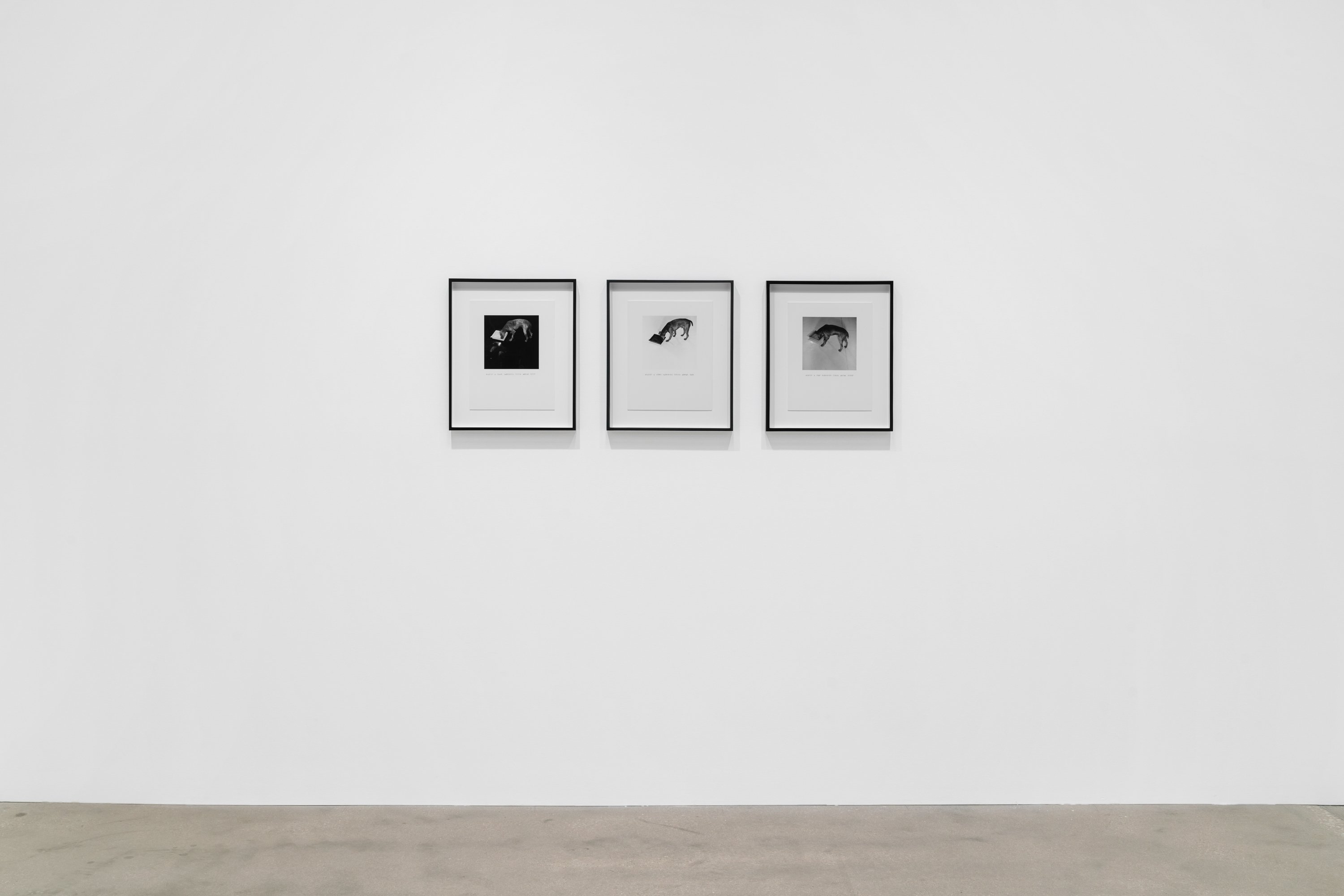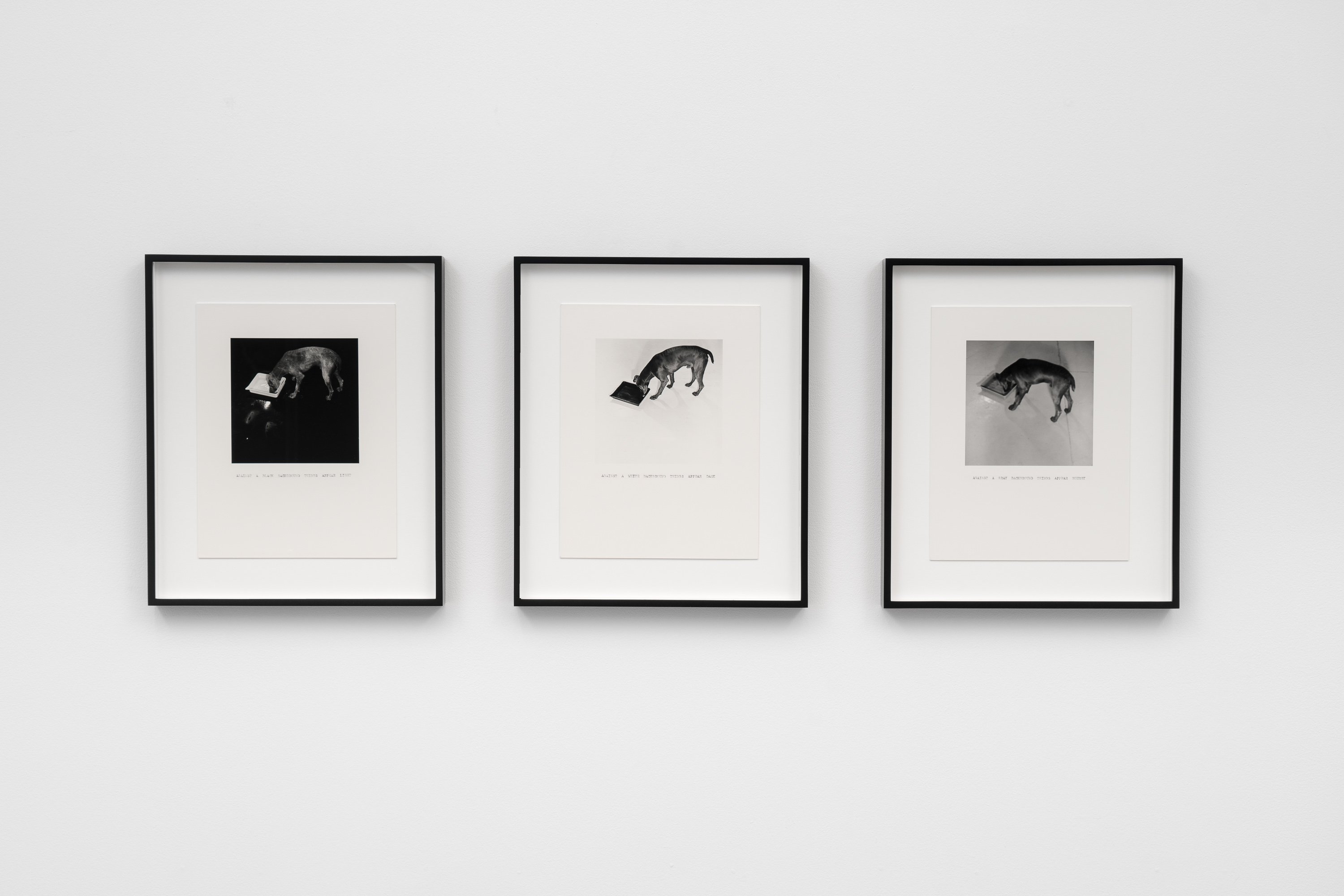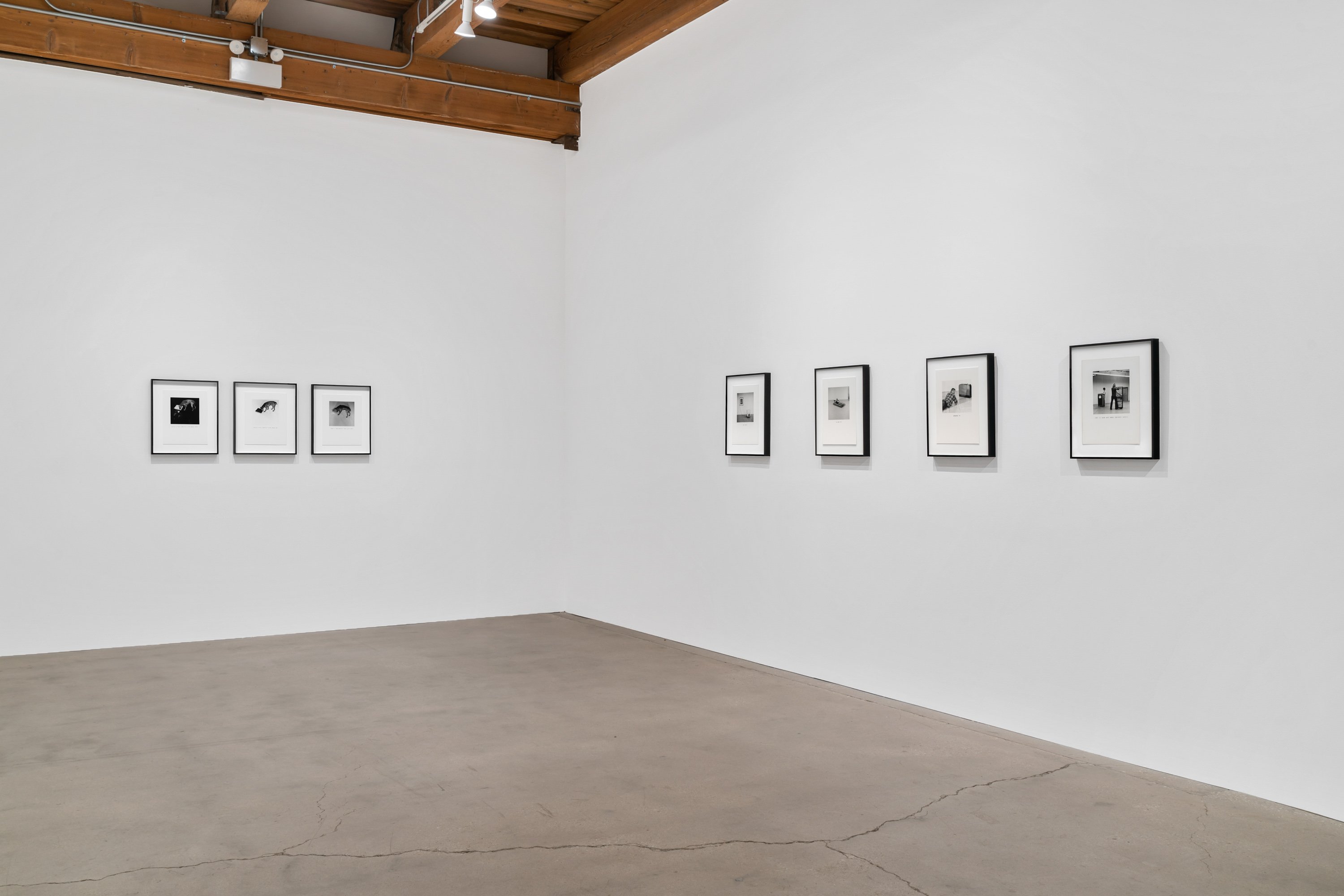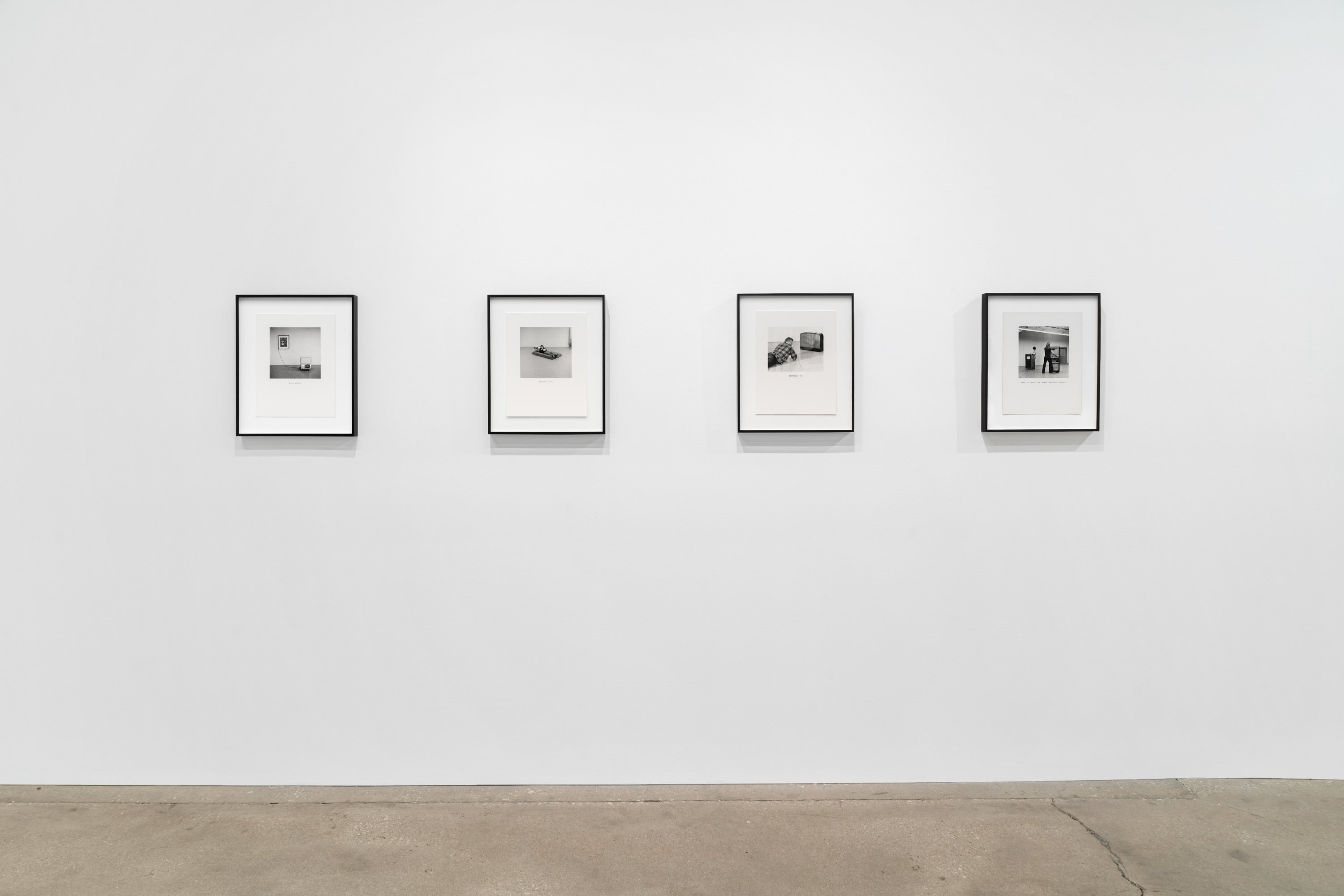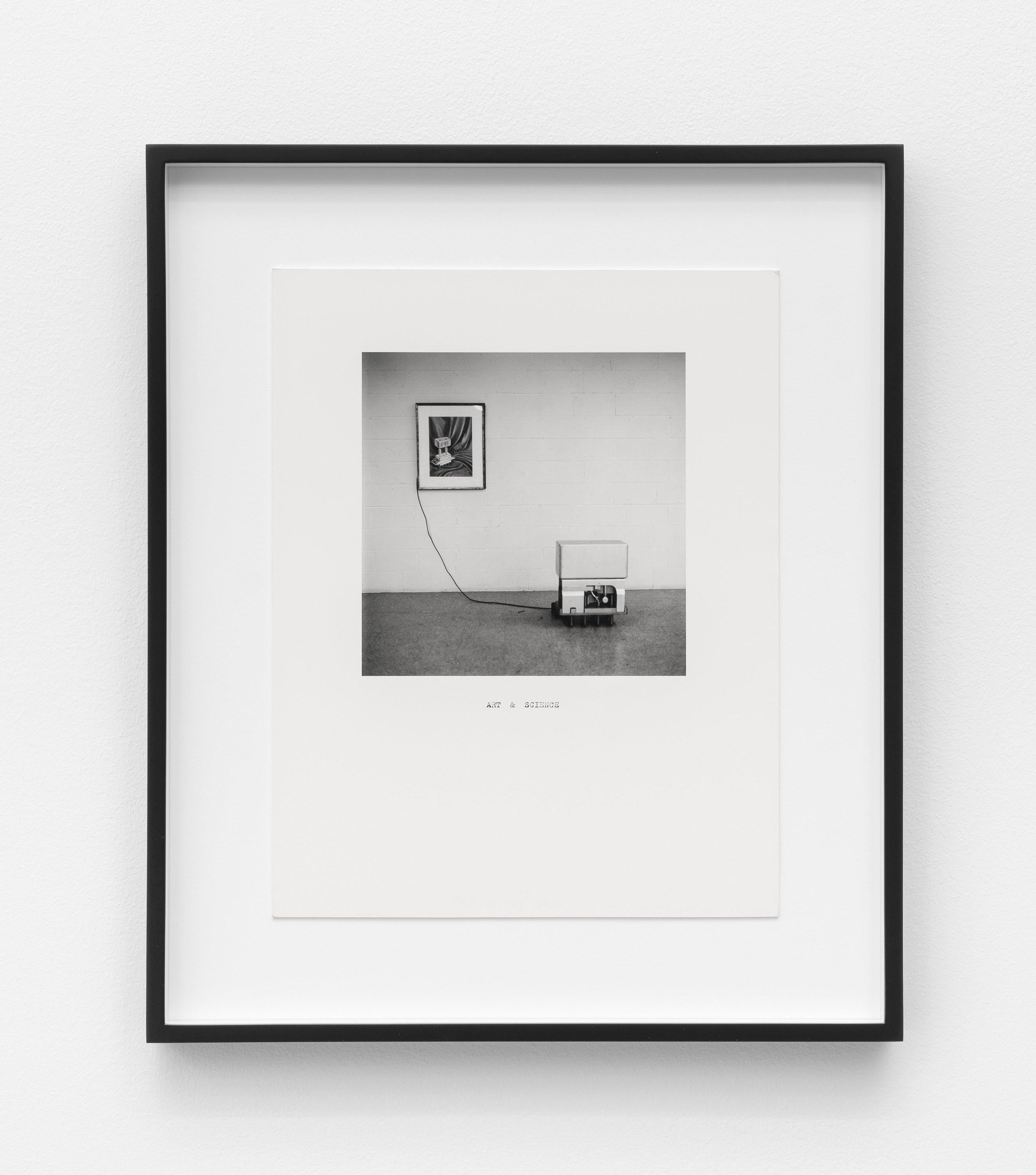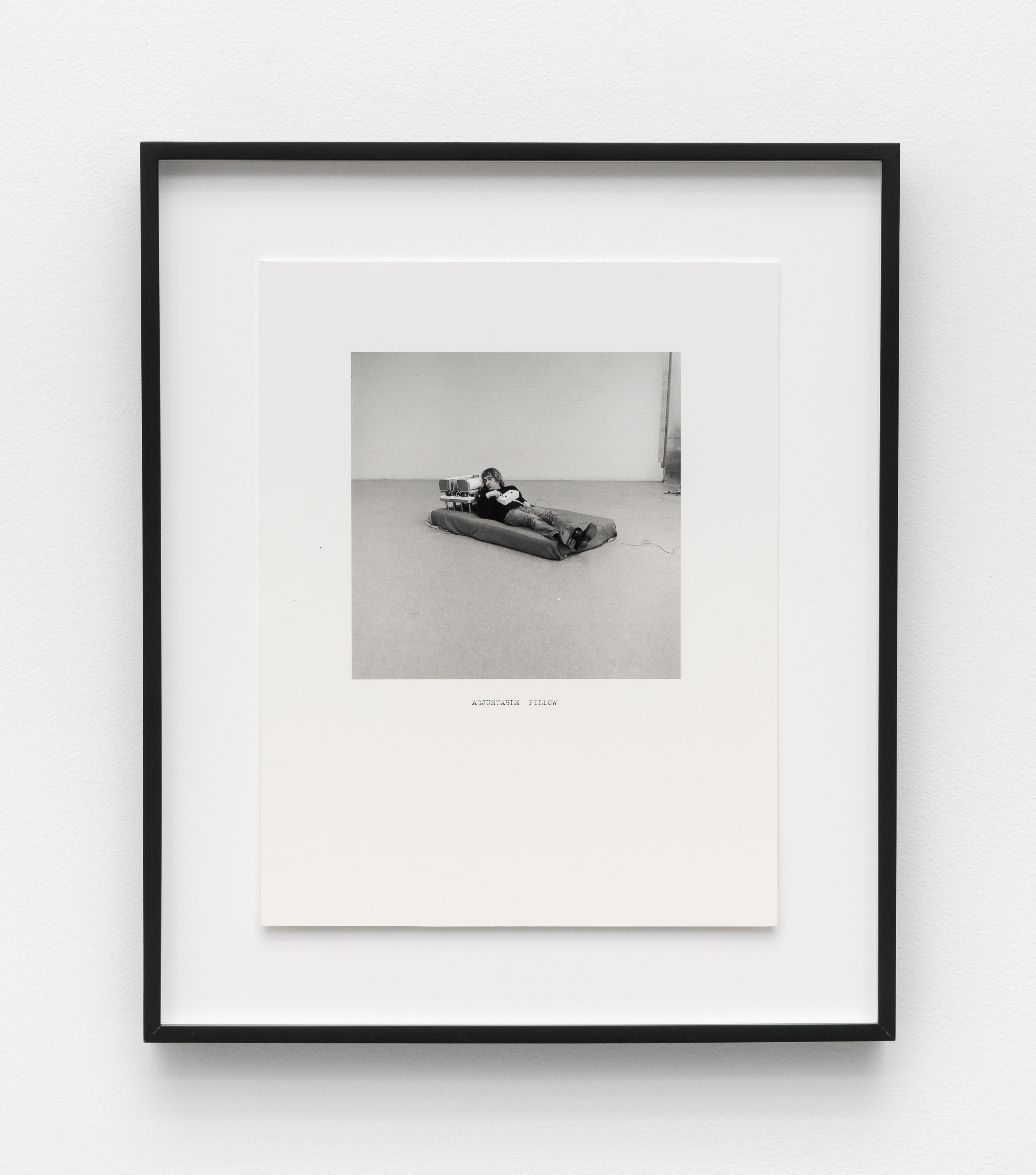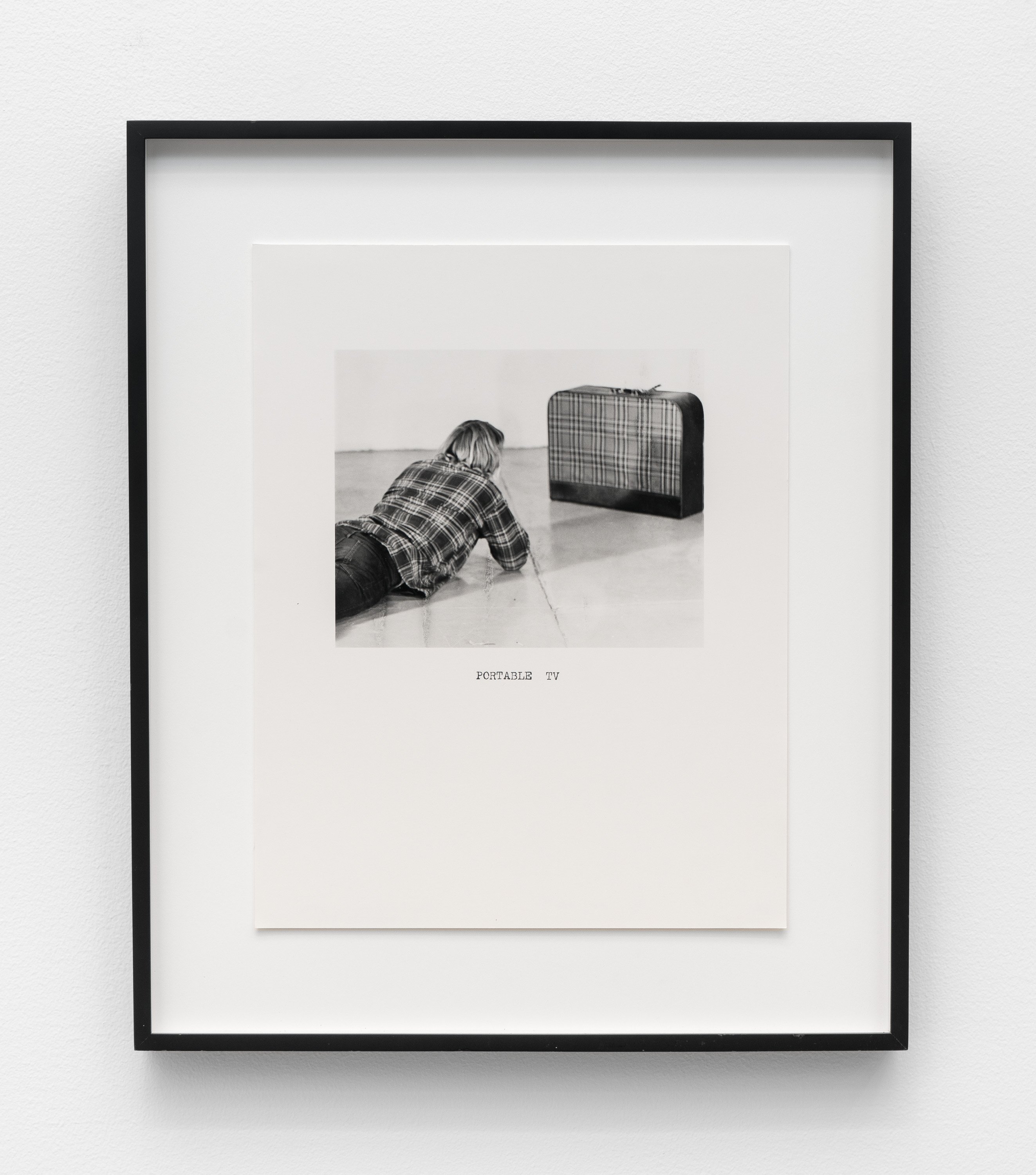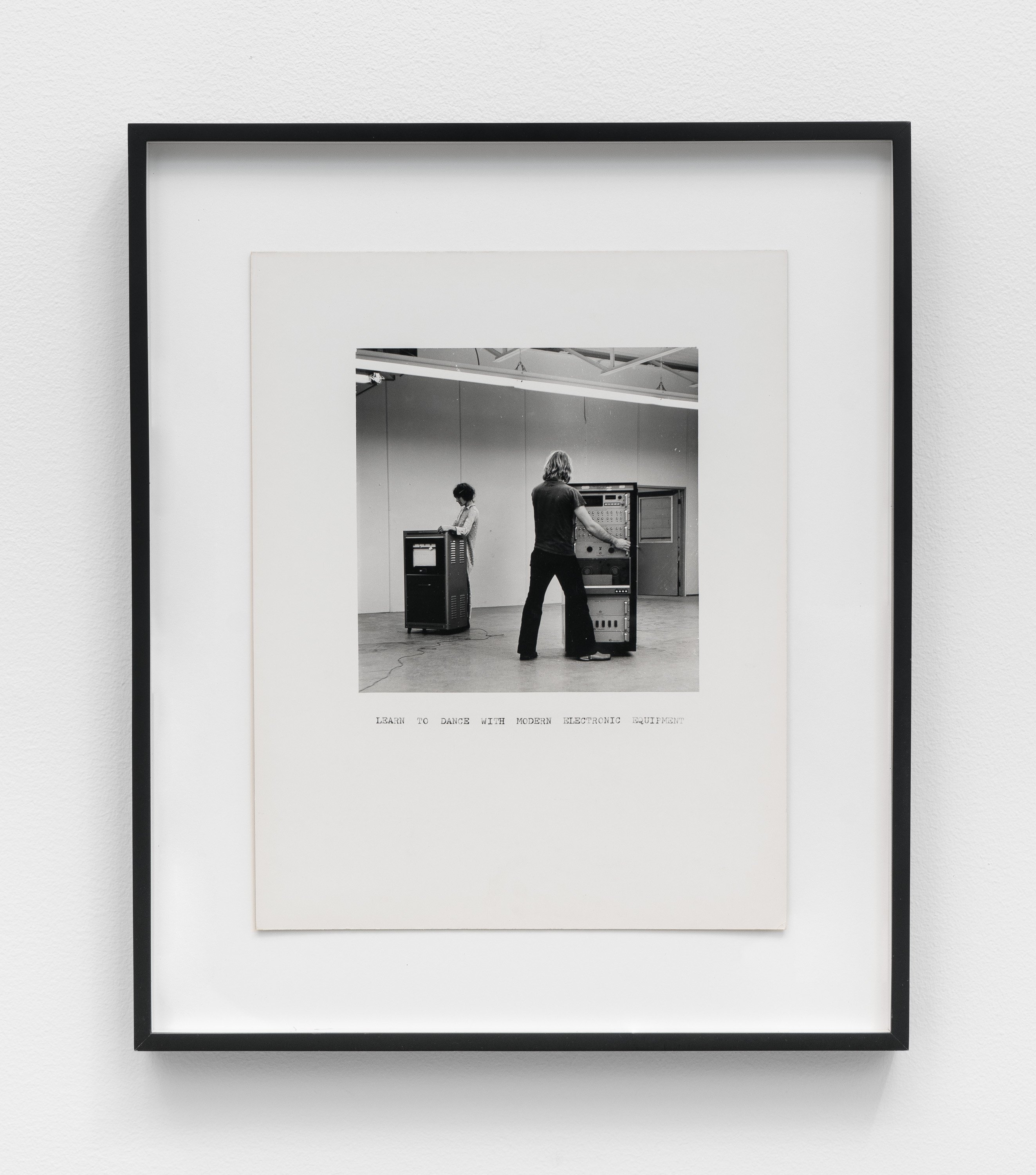William Wegman Learn to Dance with Modern Electronic Equipment, Early Conceptual Photography, 1971-74
January 26 - March 9, 2024
North Gallery
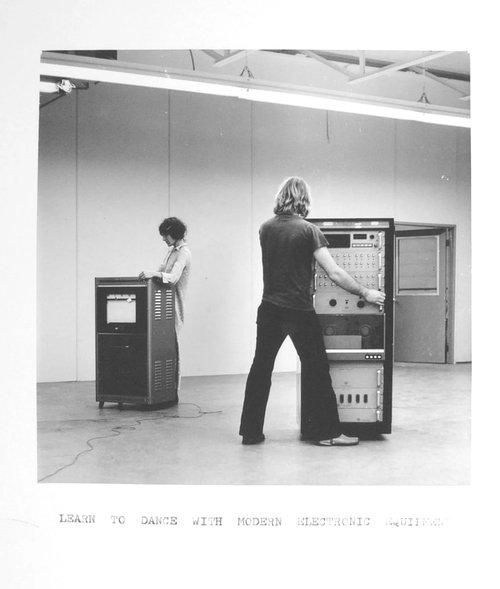
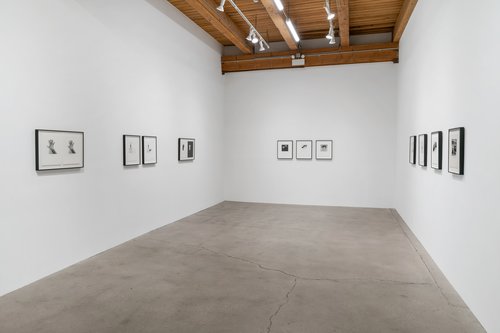
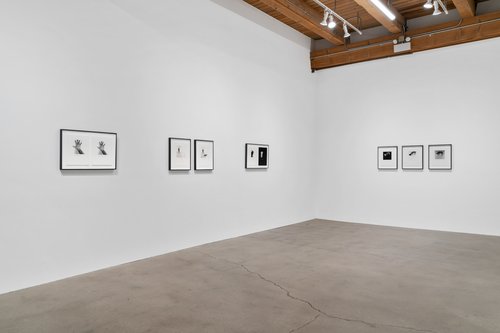
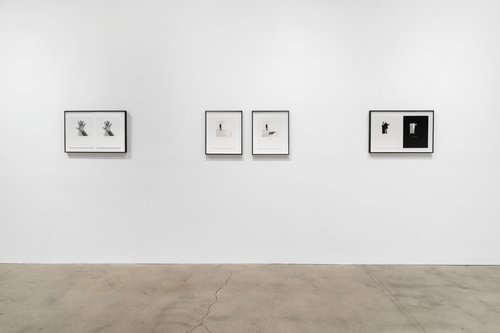
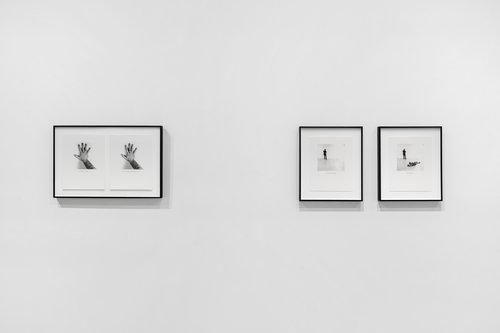
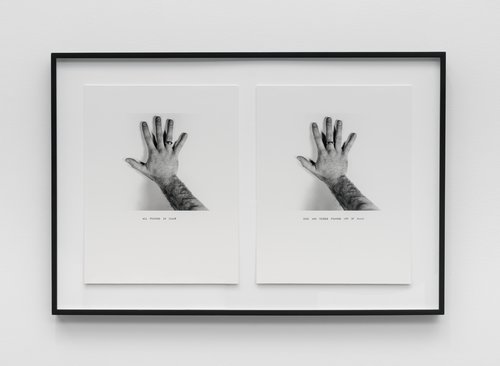
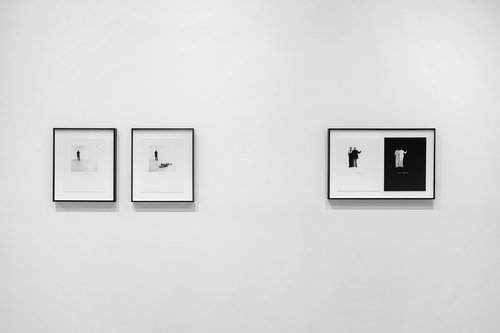
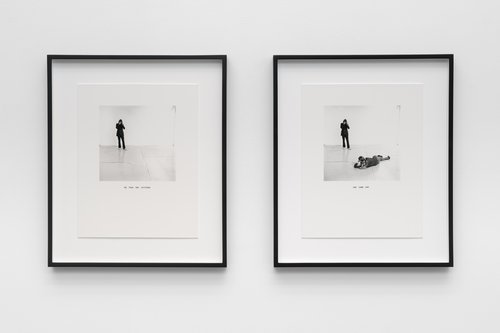
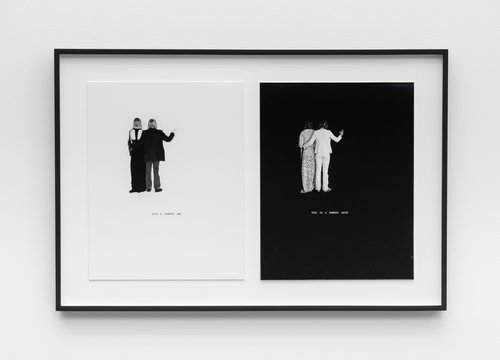
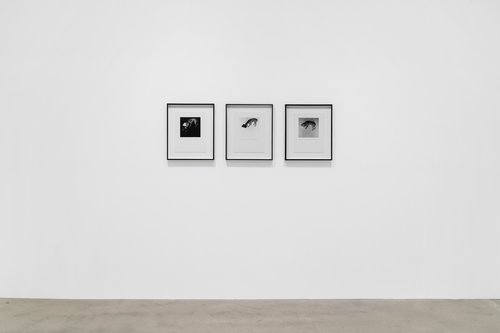
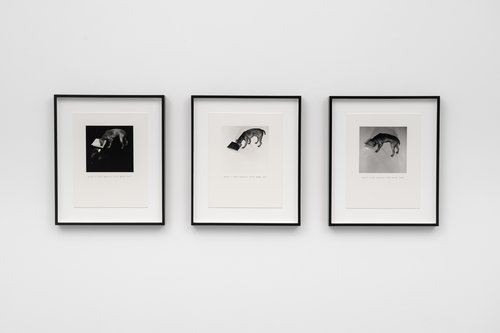
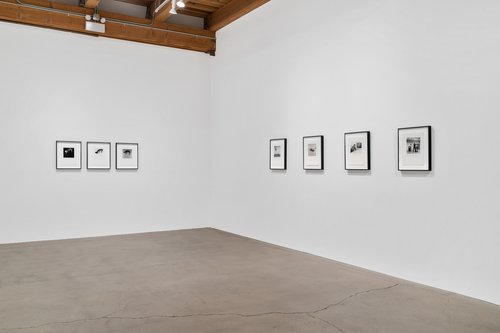
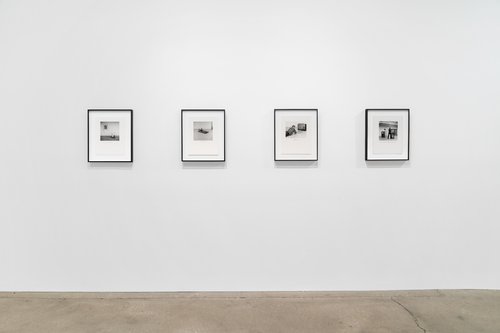
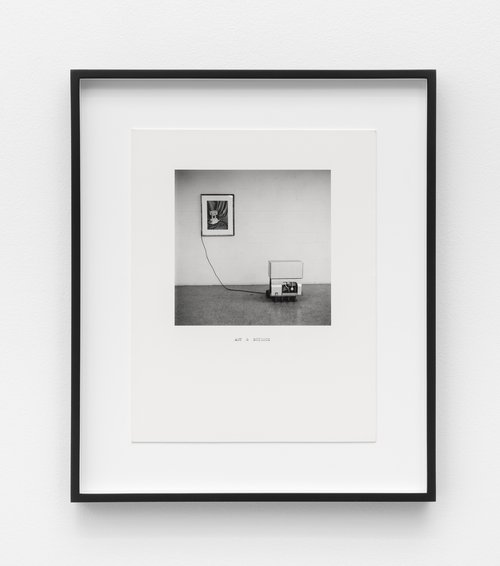
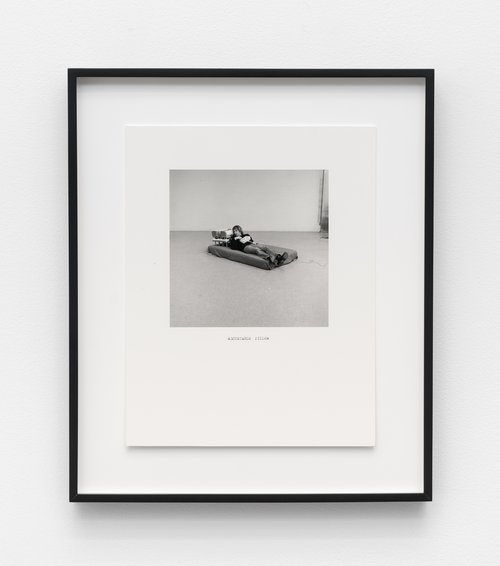
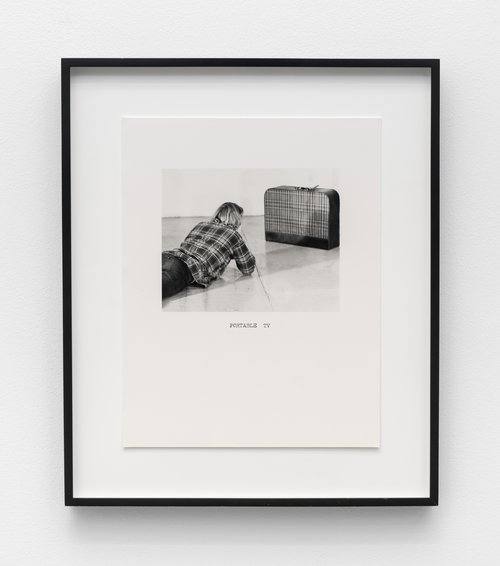
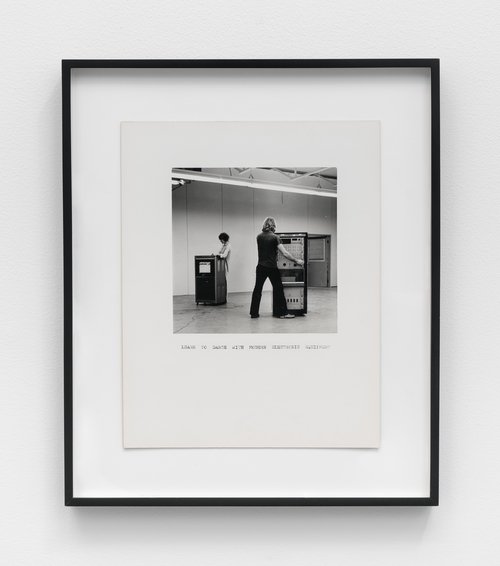
Press Release
In the north gallery, Corbett vs. Dempsey is delighted to present William Wegman, Learn to Dance with Modern Electronic Equipment, Early Conceptual Photography, 1971-74.
William Wegman (b. 1943) played a formative role in the evolution of Conceptual Art. At the outset of the ‘70s, Wegman was based in Southern California, and from his studio in Santa Monica he began an incredibly productive few years on photographs, drawings, writings, and videos, many of which dealt in clever, humorous ways with the status of language in relationship to images. Staged scenarios in the studio featuring one or two figures, sometimes in dialogue with a prop or a costume, or just objects in conversation with each other, explored a myriad of ideas – issues of scale in representation, for instance, or different ways of reading the same seemingly self-evident narrative situation. To complicate these black and white photographic inquiries, Wegman began to introduce typewritten text below the images. These words could have a variety of functions – explanatory, contradictory, mysterious. “I became interested in how the sentence could affect the image,” Wegman says, and indeed the dominance of language in the hermeneutic puzzle is often clear, but sometimes the images affect the captions, too, so what emerges in these often-hilarious works is the full dynamic relationship of text and image, their interdependency and their potential for mutual mischief.
In these early conceptual works, Wegman investigated what Roland Barthes identified as two functions for the caption – as anchor (pinning down what an image means) and relay (linking it to other images around it). However, Wegman’s anchors might be purposefully misleading or ambiguous. Take the image that lends its long title to this show, in which a man and a woman are seen holding onto racks of electronics. Are they actually dancing or were they doing something else? Is that a post-facto interpretation of their actions? In a way, you can’t “unsee” what the text tells you is there. In relay texts, like a series featuring Wegman’s first Weimaraner, Man Ray, that situates the dog against white, gray, and black backgrounds, the words not only anchor the image but suggests a definitive relationship between the three images. When Wegman moved east to New York at the end of 1973, he left most of these works, many of them unfinished, behind. Luckily, John Baldessari, who inherited his studio, held onto the prints and negatives, and nearly two decades later he returned them to the artist. Wegman continued to make photographs, drawings, videos and writings in New York. Three pieces in the show – “Art and Science,” “Adjustable Pillow” and “Learn to Dance with Electronic Equipment” – were shot in Easthampton, in an empty factory that he was using as a studio.
Most of the works in the exhibition were recently reconstructed, piecing together frames of image and frames of text from the old negatives, making prints of works that had not been completed in the ‘70s. Learn to Dance with Modern Electronic Equipment presents a rarely seen selection of Wegman’s early photographs, all of them incorporating text, from a time when his work was being included in the seminal exhibitions of Conceptual Art. Among Wegman’s (many) recent exhibitions are A Number of Problems at Magenta Plains, New York (2023), Writing by Artist at Sperone Westwater, New York (2022, catalog edited by Andrew Lampert and published by Primary Information), and Before/On/After: William Wegman and California Conceptual Art, at the Metropolitan Museum, New York (2018).



